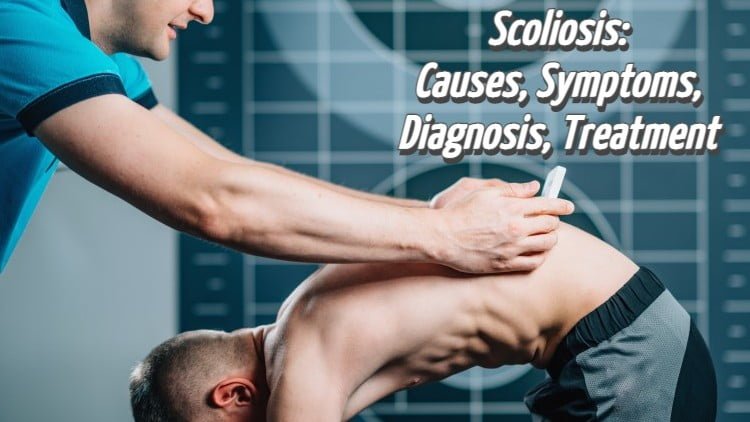Scoliosis is a condition in which the spine is shaped like an “S” or “C”. It affects all age groups.
Scoliosis is a major medical problem and the most common type of spinal deformity among adolescents. It is defined as a lateral (sideways) curvature of the spine greater than 10 degrees beyond the vertical plane of symmetry.
Scoliosis can lead to pain and other health problems that interfere with normal movement and quality of life.
What are the causes of scoliosis?
The cause of scoliosis is not known in most cases. However, sometimes it can be linked to other health problems in your family or improper posture. Scoliosis can be caused by other spinal abnormalities, like kyphosis or lordosis. It also may result from neuromuscular problems with muscles that support the spine.
In rare cases, scoliosis can be caused by a tumor or infection in the spine or nervous system. Sometimes it is associated with other diseases, like cerebral palsy.
What are the symptoms of scoliosis?
The main symptom of scoliosis is a curvature or “bend” to one side of the spine. Other symptoms can include pain, muscle weakness or numbness in the back, and difficulty breathing. Scoliosis does not always cause symptoms, so it may not be noticed until there is a significant curve in the spine. Scoliosis can affect the spinal cord, muscles, and nerves which can cause long-term nerve damage or other conditions such as leg length discrepancy or shortness of breath. These conditions need to be treated by specialists.
How to diagnose scoliosis?
The first step in diagnosing scoliosis is a physical exam. Your doctor will ask about your medical history. They will give you a physical exam. You will have X-rays to look for the curvature of the spine. If you have scoliosis, you will probably need additional tests to determine how bad it is and to help plan treatment. These tests include computerized tomography (CT) scans, magnetic resonance imaging (MRI), bone scans, and blood tests.
What is the treatment for scoliosis?
Scoliosis treatment depends on the severity of the curve. If you have mild scoliosis, your doctor may recommend exercises and a back brace to help keep your spine aligned while it grows straight.
Treatment for more severe curvatures includes bracing as well as other treatments such as surgery to stabilize your spine, physical therapy, and exercises to strengthen muscles in the torso. Surgery may be recommended if other treatments failed to yield the desired outcome.
Surgical treatment for scoliosis includes spinal fusion. During spinal fusion for scoliosis, the surgeon removes the damaged bone and fuses the healthy bone together with metal rods, hooks or screws. The surgery takes place through incisions made on both sides of the spine.
Struggling with orthopedic problems?
Dr. Manoj Kumar Khemani is one of the most trusted orthopedic surgeons, trusted by thousands of people. He specializes in a wide range of bone and joint-related problems. So, whether you’re looking for the best gout treatment in Kolkata, hip replacement, arthroscopy treatment in Kolkata, or something else, Dr. Manoj Kumar Khemani assures you of personalized care and a satisfying experience.

